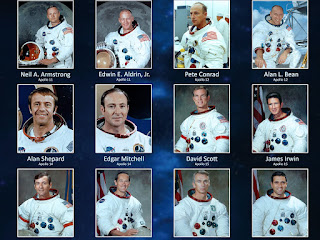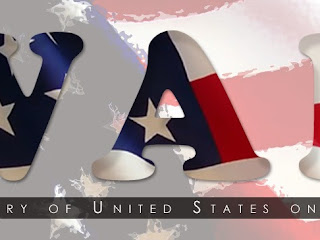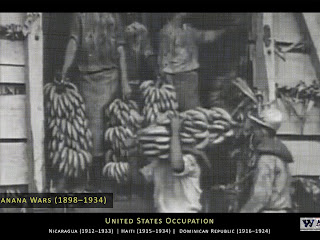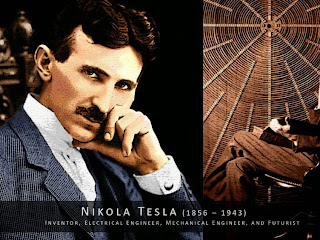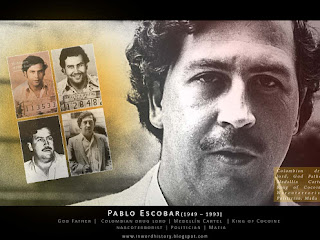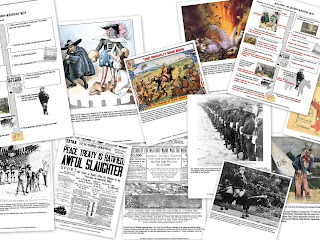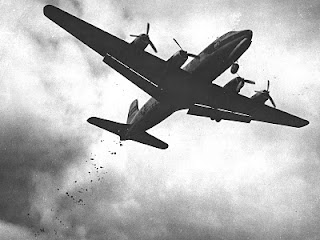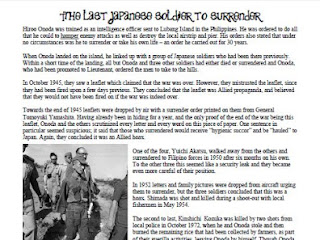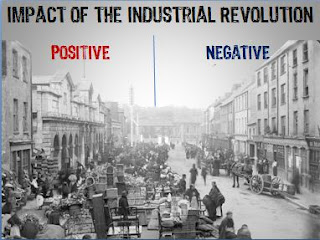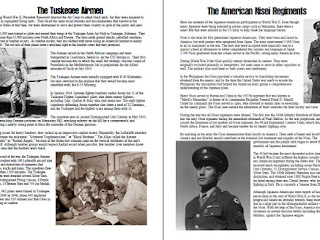world history etiketine sahip kayıtlar gösteriliyor. Tüm kayıtları göster
world history etiketine sahip kayıtlar gösteriliyor. Tüm kayıtları göster
14 Temmuz 2019 Pazar
20 Mart 2015 Cuma
Susan B. Anthony
american feminist
american socialist
Anthony Amendment
Elizabeth Cady Stanton
famous person
History
inworldhistory
personality
Susan B. Anthony
world history
Tarihçi
Comment
"The day me approaching when the whole world will recognize women as the equal of men"
- Susan B Anthony
Susan B. Anthony (1820 – 1906) was an American social revolutionist and worked against women slavery system in United States with the help of her lifelong friend Elizabeth Cady Stanton (social activist). At the age of 17 she drives a petition campaign against the slavery in American society and also she drives another largest campaigned and collected 400,000 signatures to abolition of slavery. She was arrested for voting in New York and convicted in 1872 and also she refused to pay the court fine. Every year she gives 75 to 100 speeches all over the United States and she accused for damaging the institution of marriage. In 1920, “Nineteenth Amendment to the U.S. Constitution” giving women the right to Vote which is popularly known as “Anthony Amendment”.
4 Haziran 2014 Çarşamba
Don Pedro Albizu Campos
In 1950, Don Pedro Albizu Campos, President of Puerto Rican Nationalist party was coordinated the serious of protest the against Colonialism in his region (Puerto Rica) to free the state from the United states of America rule in the island but they were strongly suppressed by the Major General Luis R. Esteves. Later he was convicted and imprisoned for encourage the army uprising in several Puerto Rica cities.
3 Haziran 2014 Salı
List of American War
american war
Cold War
history of american war
list of american war
War
war history
war of america
world history
Tarihçi
Comment
United States of America and its War History
America plays a major role in several wars around the world directly or indirectly. Still, the State holding its power in several states in the world. Most of the historian scholars believe the American state civil wars gave enormous courage to involves external wars with the help of intelligence (CIA) support all over the world. Still, the cold war between the United States and Russia continues. For this particular reason America controlling several Middle East States to respond to Russia if any future cold war broke between these states.
Two Major wars are notable in history.
- Vietnam War (1953–1975): Vietnam was supported by USSR. In this war United States fail to reach its objectives and withdrew forces Vietnam.
- Afghanistan War (1979–1989): In response to Vietnam war United States support Afghanistan to defeat Soviet. In this war, USSR fails and Withdrew its force with high rate causalities and heavy losses.
Cold War
- Korean War ((1950–1953):
- First Indochina War (1950–1954)
- Air battle over Merklín (1953)
- Laotian Civil War (1953–1975)
- Vietnam War (1953–1975)
- Congo Crisis (1960–1965)
- Bay of Pigs Invasion (1961)
- Occupation of the Dominican Republic (1965–1966)
- War in Bolivia (1966–1967)
- Korean DMZ Conflict (1966–1969)
- Cambodian Civil War (1970–1975)
- Soviet war in Afghanistan (1979–1989)
- Invasion of Grenada (1983)
- Somalia (2007)
- Syria (2014- till now)
- Yemen War (2015-till now)
Iran–Iraq War
- Operation Earnest Will (1987–1988)
- Operation Prime Chance (1987–1989)
- Operation Nimble Archer (1987)
- Operation Praying Mantis (1988)
War On Terror
- War in Afghanistan (2001–present)
- Operation Enduring Freedom – Philippines (2002–present)
- Operation Enduring Freedom-Horn of Africa (2002–present)
- Iraq War (2003–2011)
- War in North-West Pakistan (2004–present)
- War in Somalia (2006–2009)
- Operation Enduring Freedom – Trans Sahara (2007–present)
- Al-Qaeda insurgency in Yemen (2010–present)
- Operation Neptune Spear (2011)
Banana War
- Occupation of Nicaragua (1912–1933)
- Occupation of Haiti (1915–1934)
- Occupation of the Dominican Republic (1916–1924)
Few others
- Spanish–American War (1898)
- Philippine–American War (1899–1902)
- Boxer Rebellion (1899–1901)
- Lebanon crisis (1958)
- Colombian conflict (1964)
- First Gulf of Sidra incident (1981)
- Lebanese Civil War (1982–1984)
- Action in the Gulf of Sidra (1986)
- Bombing of Libya (1986)
- Invasion of Panama (1989–1990)
- Persian Gulf War (1990–1991)
- Bosnian War (1993–1995)
- Kosovo War (1998–1999)
- 2011 military intervention in Libya (2011)
- Operation Ocean Shield (2009-2016)
- Uganda (2011-2017)
2 Haziran 2014 Pazartesi
Border War (1910–1919)
american war; war of america; war; history of american war;
Pancho Villa; border war; american mexican-american war; villistas revolution;
war history
world history
Tarihçi
Comment
During Mexican revolution, American engaged its army in Mexican-American border which is also called as “Mexican-American War”. They revolution reach its height in Columbus town, New Mexico was attacked by the Mexican revolutionary Francisco "Pancho" Villa. In response the United States moved its army into Mexico to capture the Villistas revolutionist but later General John J. Pershing acknowledged the failure of the Pancho Villa Expectation in 1917. American and Mexican army ceased their forces after the victory over the Villistas in 1919.
23 Mayıs 2014 Cuma
Banana Wars
american war
Banana Massacre
banana war
Caribbean war
history of american war
massacre
spanish american war
united fruit company
War
war history
war of america
world history
Tarihçi
Comment
Banana Wars (1898–1934):
It’s a series of wars conducted by the United States of America to control the neighboring countries to preserve the American commercial interest in these regions also strengthen the central American power in this region. During this war Spain signed “The Treaty of Paris” and give up its controlled Cuba, Puerto Rico, and the Philippines to United States. Later, they occupied Panama, Honduras, Nicaragua, Mexico, Haiti, and the Dominican Republic by using military forces.
Banana Massacre: In 1928, the United Fruit Company went against the union workers with the help of Columbian military they massacred and killed merely 2,000 workers.
Part of Banana Wars:
- Nicaragua (1912–1933)
- Haiti (1915–1934)
- Dominican Republic (1916–1924)
19 Mayıs 2014 Pazartesi
Nikola Tesla
American
History
inventor
nikola tesla
world history
world history chemist
world war
Tarihçi
Comment
The Unforgotten Man
List of his invention will update soon....
27 Mayıs 2013 Pazartesi
Pablo Escobar
biography of pablo escoba
cocaine
god father
lord of drugs
pablo escobar
pablo escobar pablo escobar
world history
Tarihçi
Comment
Pablo Escobar (1949 – 1993) was a God father of Cocaine, Narcoterrorist, Lord of drugs, politician and richest criminal in Colombia. He is the first person who started drug trafficking in a professional methods and also he found the organization called “Medellín Cartel” which controls the drug trafficking all over the world. It controls 80% of world drug trafficking in the world. He gains such a highest popularity by helping the Colombian poor people and he builds schools, churches, hospitals... He was convicted for several crimes Drug trafficking and smuggling, assassinations, bombing, bribery, racketeering, money laundering, murder, political corruption. He was assassinated by the Colombian police and paramilitary in the Medellin city in 1993.
28 Şubat 2013 Perşembe
Rise of Dictators Pop Up Notes
This wonderfully creative lesson has students creating pop up figures of 5 dictators who came to power in the 1920's and 30's before World War II.
Included is a sheet with 5 people to cut out: Adolf Hitler, Joseph Stalin, Francisco Franco, Benito Mussolini, and Hideki Tojo. Students then place these onto an included world map that covers 2 pages of their notebooks with spaces for notes about each person.
A powerpoint comes with this download as well that covers everything students need to know based on Common Core Standards. The powerpoint has a warm up, quotes, pictures, and all relevant information for each dictator. This lesson is amazing for your visual and kinesthetic learners as they are creating a fantastic visual representation of dictators literally rising up out of their notebooks.
A free Preview file is available as well with the pop ups, notes pages, answer key, and 1 sample powerpoint slide. The full download includes the full 14 slide powerpoint with incredible images and quotes like below:
Included is a sheet with 5 people to cut out: Adolf Hitler, Joseph Stalin, Francisco Franco, Benito Mussolini, and Hideki Tojo. Students then place these onto an included world map that covers 2 pages of their notebooks with spaces for notes about each person.
A powerpoint comes with this download as well that covers everything students need to know based on Common Core Standards. The powerpoint has a warm up, quotes, pictures, and all relevant information for each dictator. This lesson is amazing for your visual and kinesthetic learners as they are creating a fantastic visual representation of dictators literally rising up out of their notebooks.
A free Preview file is available as well with the pop ups, notes pages, answer key, and 1 sample powerpoint slide. The full download includes the full 14 slide powerpoint with incredible images and quotes like below:
19 Şubat 2013 Salı
Spanish American War Timeline Using Primary Sources
American History
group work
imperialism
lesson plan
spanish american war
US history
worksheet.
world history
Tarihçi
Comment
Our newest lesson covers the "splendid little war" known as the Spanish American War. Although brief, this war is essential for students to understand how America transitioned into becoming a world power.
In this lesson, students analyze 10 primary sources from the Spanish American War, including cartoons, newspapers, lithographs, maps, and pictures all related to each aspect of the war.
In this lesson, students analyze 10 primary sources from the Spanish American War, including cartoons, newspapers, lithographs, maps, and pictures all related to each aspect of the war.
Students then match these documents to questions along a timeline. The documents begin with a cartoon related to America protecting Cuba and move through the explosion on the USS Maine, the Teller & Platt Amendments, Rough Riders, Yellow Journalism, Buffalo Soldiers, Philippine-American War, and more.
Each task is of varying difficulty and caters to visual and kinesthetic learners in having them finishing sketches to reinforce concepts. An answer key is included and can be seen below. You can download this lesson for your classroom by clicking here. A free preview of all the documents in the lessons is available as well.
13 Şubat 2013 Çarşamba
"Uncle Wiggle Wings - The Candy Bomber " Berlin Airlift & Communism Story
American History
berlin airlift
Cold War
Germany
reading
US history
worksheet.
world history
Tarihçi
1 Comment
This lighthearted, heartwarming true story tells of American Air Force pilot Gail Halvorsen who flew supplies over Germany during the famous Berlin Airlift of 1948.
After the Soviet Union cut off Berlin from West Germany, the US plan to fly in supplies rather than break the blockade famously embarrassed the Soviet Union. This tension eventually led to the building of the Berlin Wall.
During his flights, Halvorsen would drop candy out of his plane to the children of Berlin, earning him the nickname "Uncle Wiggle Wings the Candy Bomber".
This worksheet includes one page on this fantastic story, mixing essential Common Core knowledge like the Berlin Airlift, Allied Powers, President Truman, Stalin, and more with the amusing tale of Uncle Wiggle Wings. My students really enjoyed this story and were able to relate very well to the children of Berlin.
Just the title of the story had them laughing and anxious to read it!
You can download this worksheet for your students by clicking here. An answer key is included for your convenience.
After the Soviet Union cut off Berlin from West Germany, the US plan to fly in supplies rather than break the blockade famously embarrassed the Soviet Union. This tension eventually led to the building of the Berlin Wall.
During his flights, Halvorsen would drop candy out of his plane to the children of Berlin, earning him the nickname "Uncle Wiggle Wings the Candy Bomber".
This worksheet includes one page on this fantastic story, mixing essential Common Core knowledge like the Berlin Airlift, Allied Powers, President Truman, Stalin, and more with the amusing tale of Uncle Wiggle Wings. My students really enjoyed this story and were able to relate very well to the children of Berlin.
Just the title of the story had them laughing and anxious to read it!
You can download this worksheet for your students by clicking here. An answer key is included for your convenience.
8 Şubat 2013 Cuma
Last Japanese Soldier to Surrender in World War II
One of my favorite stories from history is that of Hiroo Onoda, a Japanese intelligence officer in World War II who was stationed in the Philippines. In 1945, he did not believe the leaflets he saw that Japan had surrendered and continued hiding in the hills, using guerrilla tactics until 1974 - almost 30 years after the war was over!! I thought his story would be great for the classroom to bring history alive and make the end of the war more personal for my students.
I created this worksheet that tells his story for my students. The downloadble & printable worksheet includes his full story in one page and is written in an engaging style that will be easy for your students to comprehend and enjoy. The included comprehension questions test your students' reading ability and knowledge of World War II history.
It does an excellent job of reinforcing to students how the Japanese felt about surrender and would work well after a lesson on the choice to use an atomic bomb or invade Japan. My students always enjoy this reading and feel a mix of humor and respect for such a dedicated soldier.
This is definitely a great read for World of US History students! You can download the worksheet here and an answer key is included for your reference.
I created this worksheet that tells his story for my students. The downloadble & printable worksheet includes his full story in one page and is written in an engaging style that will be easy for your students to comprehend and enjoy. The included comprehension questions test your students' reading ability and knowledge of World War II history.
It does an excellent job of reinforcing to students how the Japanese felt about surrender and would work well after a lesson on the choice to use an atomic bomb or invade Japan. My students always enjoy this reading and feel a mix of humor and respect for such a dedicated soldier.
This is definitely a great read for World of US History students! You can download the worksheet here and an answer key is included for your reference.
28 Ocak 2013 Pazartesi
World War II Keynote Presentation
Although I use my school/work computer for most lessons in the classroom, sometimes I want to create a more visually dynamic presentation for my students. This is when I use my Apple Macbook's Keynote software. Keynote has a lot of great features that Powerpoint lacks and one of the best is the ability to seamlessly embed videos into your presentations and edit them to your needs.
This World War II Keynote presentation is one of these lessons I created. It covers the major battles and events of the war and includes 8 short clips to help students better understand what happened. Slides include information in simple, easy to understand language for your students:
The videos include Churchill speaking, a Japanese suicide bomber, US newsreel footage and more. Maps show students exactly where each battle took place, and the videos and pictures bring them to life. My students are always all engaged throughout this entire lesson. I know your students will do the same. You can download this Keynote presentation here and use it today!
This World War II Keynote presentation is one of these lessons I created. It covers the major battles and events of the war and includes 8 short clips to help students better understand what happened. Slides include information in simple, easy to understand language for your students:
The videos include Churchill speaking, a Japanese suicide bomber, US newsreel footage and more. Maps show students exactly where each battle took place, and the videos and pictures bring them to life. My students are always all engaged throughout this entire lesson. I know your students will do the same. You can download this Keynote presentation here and use it today!
4 Ocak 2013 Cuma
The Effects of the Industrial Revolution & Communism
Our latest interactive lesson for World History covers the lasting effects of the Industrial Revolution. I've always had an easy time teaching how it starts and the major inventions, but the effects of the revolution are what probably most important for students to learn because they changed so much about the world.
This lesson available for download features a visually striking powerpoint that covers the major effects of the Industrial Revolution. Rather than simply copying the notes, students must analyze whether each effect was positive or negative and list it in the correct category:
While some such as "improved education" are simple, others like "population increase" lead to excellent class discussions as students weigh the pros and cons. Each slide features a captivating visual representation of the category that will surely benefit your visual learners:
The second half of the powerpoint compares capitalism & communism as a response to the effects. Similarly, students place characteristics such as "redistribution of wealth" under the matching philosophy.
The lesson includes a graphic organizer on which students complete the notes as well as a culminating worksheet. The worksheet is based off of the notes and can be completes without any textbook. Both Word and PDF files of the worksheets are included for your convenience along with the powerpoint from here.
Hope you can find this lesson useful in your class!
This lesson available for download features a visually striking powerpoint that covers the major effects of the Industrial Revolution. Rather than simply copying the notes, students must analyze whether each effect was positive or negative and list it in the correct category:
While some such as "improved education" are simple, others like "population increase" lead to excellent class discussions as students weigh the pros and cons. Each slide features a captivating visual representation of the category that will surely benefit your visual learners:
The second half of the powerpoint compares capitalism & communism as a response to the effects. Similarly, students place characteristics such as "redistribution of wealth" under the matching philosophy.
The lesson includes a graphic organizer on which students complete the notes as well as a culminating worksheet. The worksheet is based off of the notes and can be completes without any textbook. Both Word and PDF files of the worksheets are included for your convenience along with the powerpoint from here.
Hope you can find this lesson useful in your class!
6 Aralık 2012 Perşembe
World War II Service Plaques for Navajo Code Talkers, Tuskegee Airmen, Rosie the Riveter, & Nisei Soldiers
classroom activity
downloads
lesson plan
navajo code talkers
rosie the riveter
teacher resources
tuskegee airmen
US history
world history
world war II
Tarihçi
Comment
This downloadable creative, fun activity for World and American History classes has students reading short, one page stories of minority groups that helped during World War II. These include one page each on:
- The Navajo Code Talkers
- The Tuskegee Airmen
- Rosie the Riveter
- The American Nisei Soldiers
Here are some sample images of what the readings look like:
Each page is simple and engaging for middle and high school age students, and is based on state and Common Core Standards for history. Students then use the information they read to create commemorative plaques that honor that group for their service.
To differentiate for your classes, higher level students can read and complete all four. Lower-level readers can be placed in groups of 4, with each student reading a different story, completing a plaque, and then sharing his/her plaque with the others. English language learners or special education students can be placed in groups with all the same story to create a plaque together, and then present theirs to the rest of the class.
Here are some sample, completed plaques from a student:
As a final activity or for homework, there are 10 review questions in which students identify characteristics of each of the four minority groups.
This is a fun activity for students to learn about some of the groups whose amazing bravery and contributions helped American through World War II. Click here to download this activity for your classes and let us know what you think!
5 Aralık 2012 Çarşamba
One Year of World History Warm Ups
Last week we posted a video preview of a year's worth of warm up questions from US History to help start each class period. The video below is from a World History II class that covers material from the Renaissance & World in 1500 up through the present day. Each class period begins with one of these slides and allows students to get settled in and right to work.
Each of these visually engaging slides contains pictures, cartoons, charts, or quotes from World History based on state and Common Core Standards. You'll find slides to start off great lessons on the Protestant Reformation, Age of Exploration, Enlightenment, World Wars and more. The powerpoint file can be downloaded by clicking here and used immediately or edited to suit your needs.
Enjoy!

